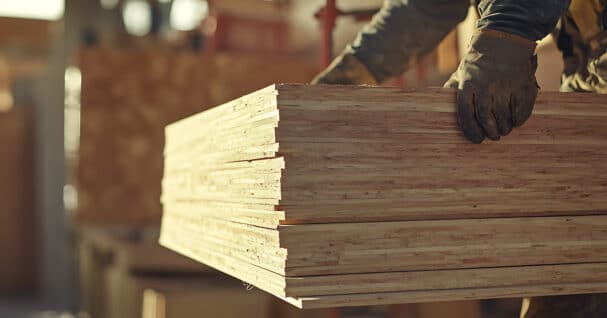
Marine plywood is designed to withstand moisture and demanding environments, but that doesn’t mean it’s maintenance-free. Whether you’re building a boat, a dock, or outdoor furniture, proper care and sealing can significantly extend the life of this durable material. In this guide, we’ll cover essential maintenance tips, waterproofing methods, and how marine plywood compares to pressure-treated wood.
What Makes Marine Plywood Different?
Marine plywood is manufactured with high-quality veneers and waterproof adhesive, making it stronger and more resistant to delamination in wet environments. It contains fewer voids than standard plywood, which minimizes water penetration and structural weaknesses. This makes it a top choice for outdoor and water-adjacent projects where moisture exposure is unavoidable.
To learn more about the product itself, visit our Marine Plywood product page.
Why Maintenance Still Matters
While marine plywood is engineered for moisture resistance, prolonged exposure to the elements can still take a toll. Sunlight, saltwater, and changing weather conditions can lead to surface damage, structural weakening, and reduced lifespan. Waterproofing — especially sealing marine plywood regularly — helps maintain its integrity, prevents rot, and enhances its longevity.
How to Waterproof Marine Plywood
Use a High-Quality Sealer
Choose a penetrating epoxy or marine-grade polyurethane. These sealers guard against moisture infiltration and protect the plywood from UV damage. Be sure to coat all surfaces, including the edges and any cuts, to create a complete moisture barrier.
Prep the Surface First
Before sealing, fill any cracks or holes with a waterproof filler. Then sand the surface smooth to allow for even application and strong adhesion of the sealant.
Apply Multiple Coats
For reliable protection, apply two to three coats of sealant. Allow each coat to dry fully before adding the next. This layering helps ensure that your plywood can stand up to extended exposure.
Stick to a Resealing Schedule
If your project stays outdoors, reseal it every one to two years. Keeping up with this schedule helps protect against long-term wear and tear.
Tips for Long-Term Marine Plywood Maintenance
- Inspect routinely: Look for soft spots, peeling finishes, or signs of mold.
- Avoid standing water: Elevate surfaces where possible to reduce prolonged water contact.
- Store smart: Keep unused plywood in a dry, shaded place.
- Use the right hardware: Choose stainless or coated fasteners to prevent rust and extend material life.
Marine Plywood vs. Pressure-Treated Wood
Both marine plywood and pressure-treated wood resist moisture — but they’re not interchangeable. Here’s how they compare:
- Marine plywood is crafted with waterproof adhesives and top-grade veneers, making it ideal for structural applications where stability and appearance matter.
- Pressure-treated wood is chemically infused to deter insects and rot. It’s more appropriate for ground-contact use or hidden framing but can warp over time.
If you’re working on a project exposed to water or humidity, marine plywood generally offers better durability and easier waterproofing.
When to Replace Marine Plywood
Even with great care, there comes a time to replace marine plywood. Keep an eye out for:
- Soft spots that remain after resealing
- Mold or mildew that doesn’t wash away
- Warping or bubbling that affects performance
Spotting these early can help you avoid structural problems or water damage.
Ready to Get Started?
Forest Plywood offers a full range of premium marine plywood for any scale of project. Whether you’re a seasoned builder or tackling a DIY job, we’ll help you choose the right product and keep it protected for years to come.
Visit one of our locations to shop in person, or contact us for advice on product selection and maintenance. You can also explore more plywood options and resources on our homepage.



